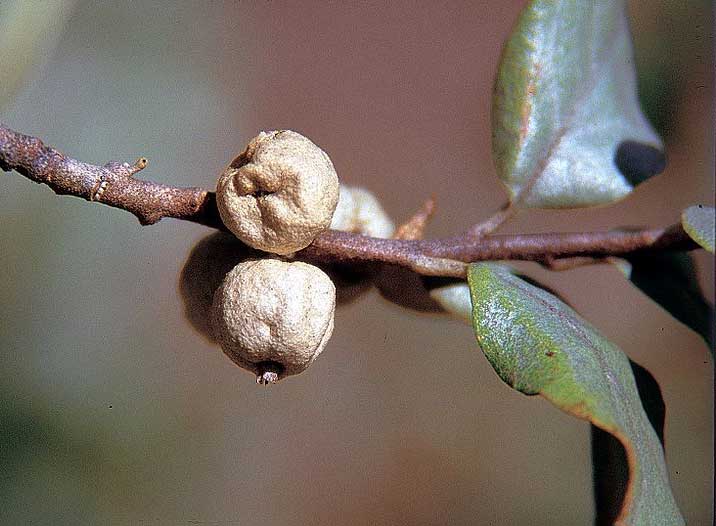
Elaeagnus commutata (*)
Classification System: APG IV
Superregnum: Eukaryota
Regnum: Plantae
Cladus: Angiosperms
Cladus: Eudicots
Cladus: Core eudicots
Cladus: Rosids
Cladus: Eurosids I
Ordo: Rosales
Familia: Elaeagnaceae
Genus: Elaeagnus
Sectio: E. sect. Commutatae
Species: Elaeagnus commutata
Name
Elaeagnus commutata Bernh. ex Rydb., 1917
Hybrids
E. × pyramidalis
Synonyms
Elaeagnus argentea Pursh
Elaeagnus commutata Bernh.
Shepherdia argentea hort. ex Schltdl.
Distribution
Native distribution areas:
Continental:Northern America
Alaska, USA (Colorado, Idaho, Kentucky, Maryland, Minnesota, Montana, North Dakota, Rhode Island, South Dakota, Texas, Utah, Washington State, Wyoming), Canada (Alberta, British Columbia, Manitoba, Northern Territories, Nunavut, Ontario, Quebec, Saskatchewan, Yukon)
References: Brummitt, R.K. 2001. TDWG – World Geographical Scheme for Recording Plant Distributions, 2nd Edition
References
Primary references
Bernhardi, J.J., 1917. Flora of the Rocky Mountains . . . 582.
Links
Hassler, M. 2020. Elaeagnus commutata. World Plants: Synonymic Checklists of the Vascular Plants of the World In: Roskovh, Y., Abucay, L., Orrell, T., Nicolson, D., Bailly, N., Kirk, P., Bourgoin, T., DeWalt, R.E., Decock, W., De Wever, A., Nieukerken, E. van, Zarucchi, J. & Penev, L., eds. 2020. Species 2000 & ITIS Catalogue of Life. Published online. Accessed: 2020 Apr 08. Reference page.
Govaerts, R. et al. 2020. Elaeagnus commutata in Kew Science Plants of the World online. The Board of Trustees of the Royal Botanic Gardens, Kew. Published online. Accessed: 2020 Apr 08. Reference page.
International Plant Names Index. 2020. Elaeagnus commutata. Published online. Accessed: Apr 08 2020.
Tropicos.org 2020. Elaeagnus commutata. Missouri Botanical Garden. Published online. Accessed: 08 Apr 2020.
USDA, ARS, Germplasm Resources Information Network. Elaeagnus commutata in the Germplasm Resources Information Network (GRIN), U.S. Department of Agriculture Agricultural Research Service. Accessed: 09-Oct-10.
Vernacular names
čeština: Hlošina stříbrná
dansk: Bredbladet sølvblad
Deutsch: Silber-Ölweide
English: American Silverberry
suomi: Hopeapensas
français: Chalef argenté
hornjoserbsce: Slěborny dźiwi wolijowc
íslenska: Silfurblað
lietuvių: Amerikinis žilakrūmis
norsk: Sølvbusk
русский: Лох серебристый
svenska: Silverbuske
українська: Маслинка срібляста
中文: 蔓胡颓子
Elaeagnus commutata, the silverberry[1] or wolf-willow, is a species of Elaeagnus native to western and boreal North America, from southern Alaska through British Columbia east to Quebec, south to Utah, and across the upper Midwestern United States to South Dakota and western Minnesota.[2][3] It typically grows on dry to moist sandy and gravel soils in steppes, meadows or woodland edges.[4]
Contents
1 Description
2 Use and Consumption
3 References
4 External links
Description
These plants are shrubs or small trees growing to 1–4 m tall. The leaves are broad lanceolate, 2–7 cm long, silvery on both sides with dense small white scales. The fragrant flowers are yellow, with a four-lobed corolla 6–14 mm long. The fruits are ovoid drupes 9–12 mm long, also covered in silvery scales. The fruit pulp is floury in texture, and surrounds the single seed.[4]
Use and Consumption
The species is cultivated as an ornamental plant for its silvery foliage.
Both the fruit and seeds of this plant are edible either cooked or raw. The fruit is very astringent unless it is fully ripe. The fruit is a very rich source of vitamins and minerals especially A, C and E. As well it is a fairly good source of essential fatty acids. These fats are rarely found in fruits.[5] This plant, like legumes, is able to fix nitrogen. When grown in orchards as a companion plant, it has been documented to increase fruit production by ten percent. Traditionally the fibrous bark of this tree has been twisted to make strong ropes, and woven into clothing and blankets [5]
Sharp tailed grouse and songbirds eat the fruits.[6] This plant is a food source for sharp tailed grouse in the winter.[7] Silverberry is an important food for wildlife and it provides over one quarter of the diet for moose during winter in Montana. It also provides food for deer and elk. It provides cover and nesting sites for mallards and many passerine birds in North Dakota[8] "In rough fescue grasslands, silverberry at 1,000 stems per acre increases forage production."[9]
References
USDA, NRCS (n.d.). "Elaeagnus commutata". The PLANTS Database (plants.usda.gov). Greensboro, North Carolina: National Plant Data Team. Retrieved 18 January 2016.
"Elaeagnus commutata". Germplasm Resources Information Network (GRIN). Agricultural Research Service (ARS), United States Department of Agriculture (USDA). Retrieved 16 January 2018.
"Elaeagnus commutata". County-level distribution map from the North American Plant Atlas (NAPA). Biota of North America Program (BONAP). 2014.
Plants of British Columbia: Elaeagnus commutata
"Elaeagnus commutata Silverberry PFAF Plant Database".
Petrides, George A. (1998). A Field Guide to Western Trees: Western United States and Canada. Houghton Mifflin. ISBN 9780395904541.
"Archived copy" (PDF). Archived from the original (PDF) on 2015-04-23. Retrieved 2015-05-04.
Esser, Lora L. (1994). "Elaeagnus commutata". Fire Effects Information System (FEIS). US Department of Agriculture (USDA), Forest Service (USFS), Rocky Mountain Research Station, Fire Sciences Laboratory.
Bailey, Arthur W. (1970). "Barrier effect of the shrub Elaeagnus commutata on grazing cattle and forage production in central Alberta". Journal of Range Management. 23 (4): 248–251. doi:10.2307/3896214. hdl:10150/647549. JSTOR 3896214. [23669]
Retrieved from "http://en.wikipedia.org/"
All text is available under the terms of the GNU Free Documentation License

